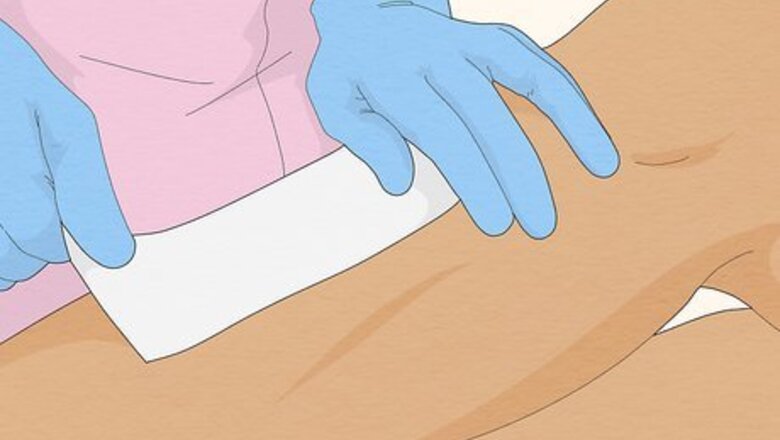
views
Preventing Irritation
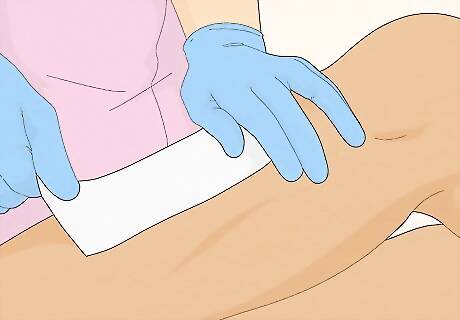
Choose a qualified aesthetician to perform your waxing. Make sure that the salon is clean and follows all state safety regulations. Lack of hygiene or access to high-quality skin products may lead to more irritation of your skin, as well as the potential for infection.
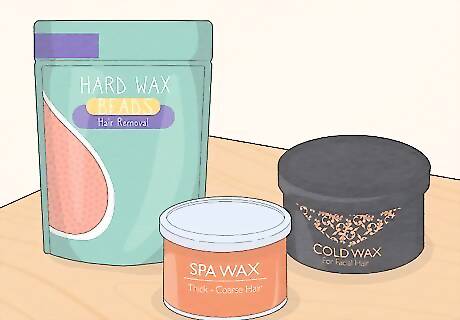
Purchase a hair removal wax. You can conduct your own waxing at home, if you feel confident about your ability to apply and remove the product. There are a wide variety of waxes available, usually at your local pharmacy, that offer a range of methods and tools for self-waxing regimens. Be sure to read all labels before using, so that you’re aware of any potential side effects or irritating ingredients. If you do decide to wax yourself, make sure you don't have any acne, open sores, or infections where you plan on waxing. Waxing could irritate your skin further and make the problem worse.

Make your own waxing product. If you don’t have the time or the budget to visit the salon for a hair wax, then find a simple recipe using water, lemon juice, and sugar to make your own wax. A sugar wax is all-natural, containing no unnecessary chemical agents that might cause irritation.
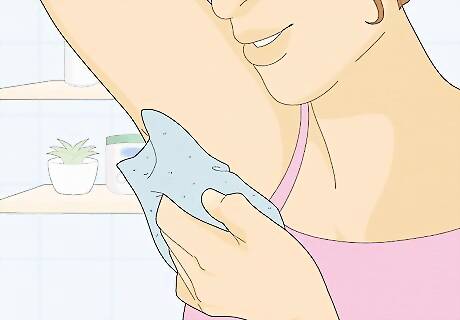
Use warm water to open your pores. If you’re waxing at home, first open your pores to allow for easier hair removal. Either press a warm wet cloth to the area to be waxed, or take a warm shower.
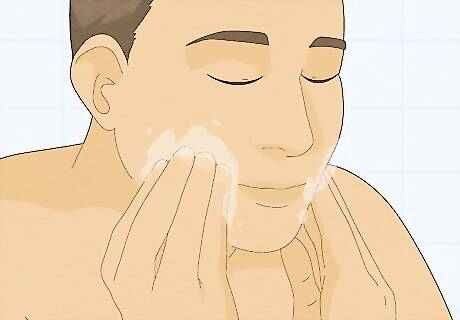
Clean your skin with a gentle cleanser. Bacteria and dirt on your skin can lead to redness if not removed before waxing, as the procedure can temporarily open pores wider and allow those irritants access.
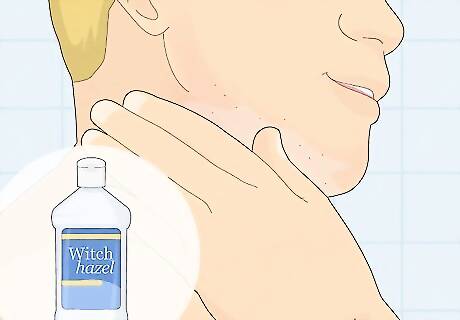
Pat your skin with witch hazel after waxing. Witch hazel may have some antiseptic properties, and so it could help keep your skin clean after waxing. Additionally, witch hazel may have anti-inflammatory properties, and so it could sooth irritation and redness before it becomes a bigger problem.
Using Household Remedies
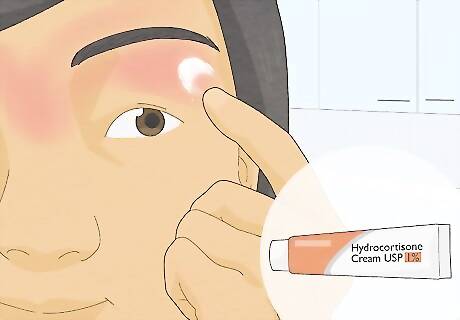
Apply a thin layer of 1% hydrocortisone. Hydrocortisone can be used without a prescription for the temporary relief of minor skin irritations. An anti-inflammatory agent, hydrocortisone also constricts blood vessels, thus reducing redness. Wash the affected area, then gently rub in a thin film on the affected areas, up to four times a day. Try applying a moisturizer with ceramides or the antioxidants feverfew or licorice extract before the hydrocortisone, in order to protect and soothe your skin. To apply hydrocortisone in spray form, shake well and hold the container 3–6 inches (7.6–15 cm) away from your skin to apply. Don’t inhale the vapors, and cover your eyes if you’re spraying near your face.
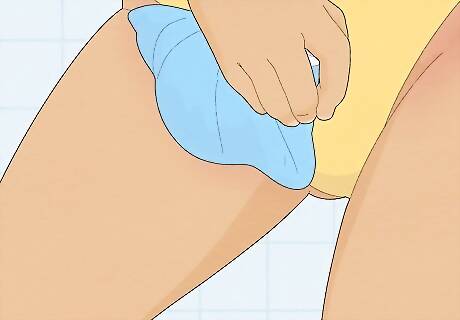
Make a cool compress. Combine equal parts water and ice in a bowl. Soak a clean cloth in the mixture, then apply to affected area for five minutes. Repeat the application three times. The inflammation of your skin after waxing is similar to a sunburn, and a cool compress will ease constrict the blood vessels and reduce swelling to lessen the appearance of redness.
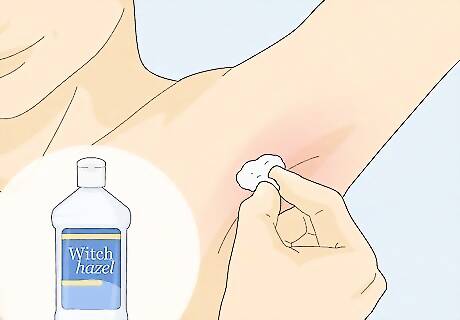
Apply a cotton ball soaked in witch hazel. Pour approximately three tablespoons of witch hazel into a small bowl and soak either a clean cloth or cotton balls in it. Apply lightly to the area of redness as needed. The tannins and oils in witch hazel may help lessen inflammation and possibly reduce redness and discomfort, though more research is needed to determine its effectiveness.
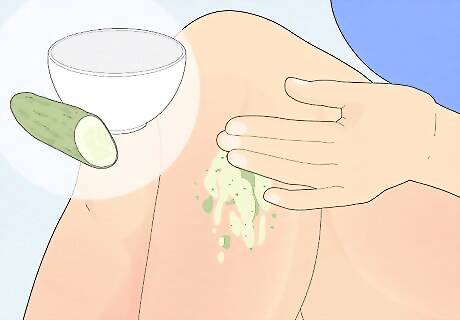
Make a cooling cucumber mask. Cucumber may have some mild analgesic, or pain relief, properties which could encourage healing of red and inflamed skin. Slice a chilled cucumber and apply the slices to the red areas of your skin. Turn the slices over as they warm to your skin, in order to keep the cool side next to your skin. To make a cucumber mask for lasting effect, use a food processor or grater to create a paste and apply to the affected area. For a thicker paste, add cornstarch or aloe vera gel.
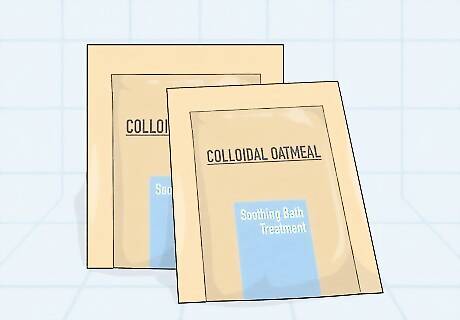
Make a calming colloidal oatmeal mask. Colloidal oatmeal, made from finely ground oatmeal can soothe inflammation and help moisturizes skin, so it might also help with redness. Mix a few teaspoons of 100% pure colloidal oatmeal with just enough water to create a paste. Apply to the affected area and allow to dry for 10 minutes before rinsing off. Use this treatment up to four times per week. Make a bath using colloidal oatmeal if your redness is your body rather than on your face. You can purchase bath packets containing 100% colloidal oatmeal in your local pharmacy. Make your own colloidal oatmeal by grinding stone ground or rolled, but not instant, oats in a food mill or food processor.
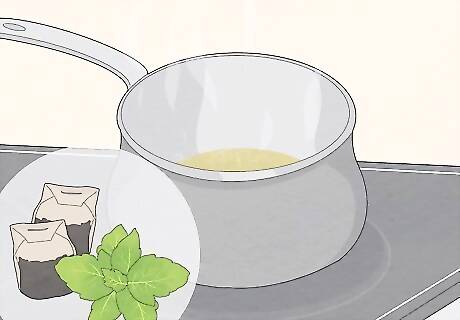
Apply a soothing mint and green tea mix. Mint is a natural cooling agent, and green tea contains tannic acid and antioxidants which may help heal damaged skin. Pour 1 US-quart (950 ml) of boiling water over a pot containing 5 green tea bags and 3 cups of fresh mint leaves. Cover and let the mixture steep and cool for at least one hour. Soak a cotton ball in the liquid and apply to the areas of redness. You can also pour the cooled liquid directly over the burn if you wish.

Apply anti-inflammatory manuka honey. This honey from New Zealand comes from bees that feed on the manuka tree, and has been shown to have some anti-inflammatory properties. Apply a small amount to the affected area, let it rest for a few minutes, then rinse off with warm water. Be sure to purchase manuka that has a UMF/OMA rating of 15 or above. Scientists in New Zealand developed this system to rate the antibacterial activity level of the honey. The antibacterial properties of this honey make it useful as a daily cleanser, too.
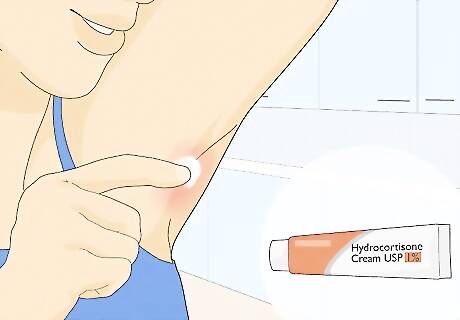
Apply a thin layer of 1% hydrocortisone. Hydrocortisone can be used without a prescription for the temporary relief of minor skin irritations. An anti-inflammatory agent, hydrocortisone also constricts blood vessels, thus reducing redness. Wash the affected area, then gently rub in a thin film on the affected areas, up to four times a day. Try applying a moisturizer with ceramides or the antioxidants feverfew or licorice extract before the hydrocortisone, in order to protect and soothe your skin. To apply hydrocortisone in spray form, shake well and hold the container 3–6 inches (7.6–15 cm) away from your skin to apply. Don’t inhale the vapors, and cover your eyes if you’re spraying near your face.
Using Essential Oils
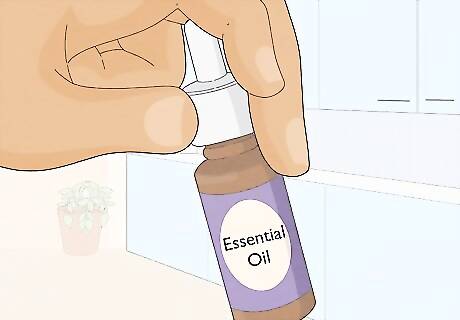
Consider an essential oil to reduce redness and protect your skin. As steam-distilled plant extracts, essential oils are highly potent, and should be used with attention to all warnings for potential side effects and allergic reactions. Any essential oil you are working with should be diluted in a “carrier oil,” such as olive oil, to around 1–3% for use in skin care. Certain essential oils can be disruptive to medical conditions like pregnancy, high blood pressure, or epilepsy. Ask your doctor before using any herbal remedies. While many essential oils can be combined, take care not to use too many remedies at once, as the side effects and interactions may cause skin irritation or health problems.
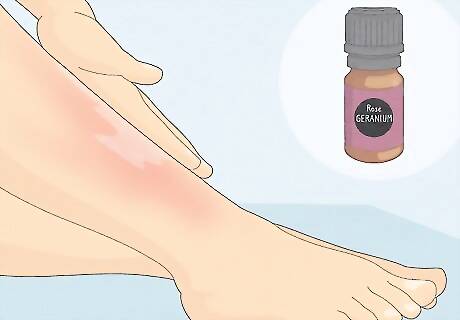
Apply rose geranium essential oil to reduce swelling. Research has confirmed that rose geranium essential oil restricts the skin’s inflammatory responses to a significant degree. Blend 6 to 15 drops of rose geranium per ounce of “carrier oil” and apply to the affected skin in a thin layer. Repeat as needed.
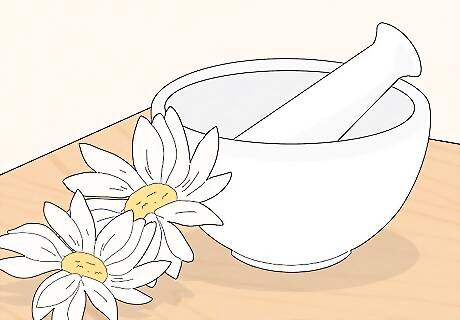
Use chamomile oil to ease inflammation. Chamomile oil is absorbed into the deeper layers of the skin, which is significant for its use as an anti-inflammatory agent. Although the scientific evidence is not certain yet, anecdotal evidence supports the use of chamomile for treating mildly burned and irritated skin. Chamomile can cause an allergic reaction in some people, test a small area of skin first to make sure there is no irritation. Add a few drops of chamomile essential oil to an ounce of jojoba oil and apply a small amount to the redness on your skin. Make a paste of chamomile by grinding dried flowers in a clean coffee grinder or with a mortar and pestle. Add water and some whole oats until you’ve reached a paste-like consistency. Apply to the areas of redness and let rest for 15 minutes. Rinse off gently with cool water. Repeat as needed.

Add lavender oil to your skin cream. Lavender oil has antiseptic and antifungal properties, and it improves healing for minor burns and sunburns because it promotes scar tissue formation. A combination of lavender oil and chamomile is often used to treat eczema, another skin condition that results in inflammation and redness. Lavender essential oil may cause an allergic reaction in certain people, so test a small area of skin first for irritation. Never ingest lavender oil, as it may cause serious health complications.
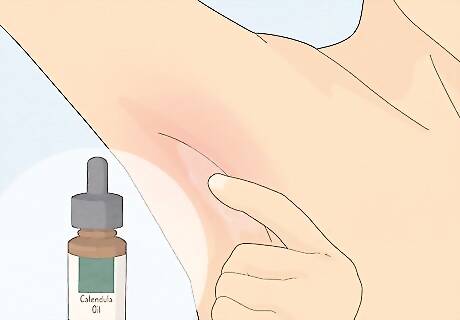
Apply soothing calendula oil. Calendula has antioxidant properties and is often used to reduce pain and swelling, as well as the overall appearance of skin. Dilute calendula oil in a “carrier oil” or mix with a few drops into a fragrance-free cream or ointment and apply to the affected area. Don’t confuse calendula with ornamental marigolds of the Tagetes genus, which are commonly grown in vegetable gardens.
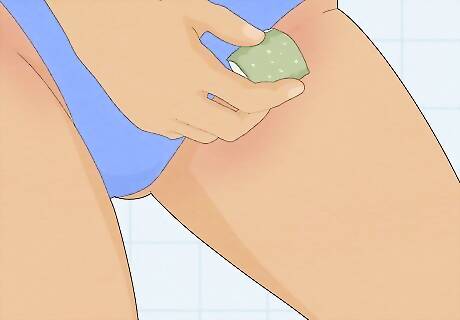
Apply pure aloe vera. Aloe vera, a gel that comes from the aloe vera leaf, has been used for thousands of years as a topical pain-reliever and ointment. Studies show that application of pure aloe vera gel can reduce inflammation and pain of burns and minor abrasions. Apply a small amount of the gel to redness and let it absorb into your skin. Many after-sun lotions contain aloe vera, but be sure to choose one with close to 100% aloe vera and no alcohol products. Aloe vera may cause skin irritation in people who are allergic.




















Comments
0 comment